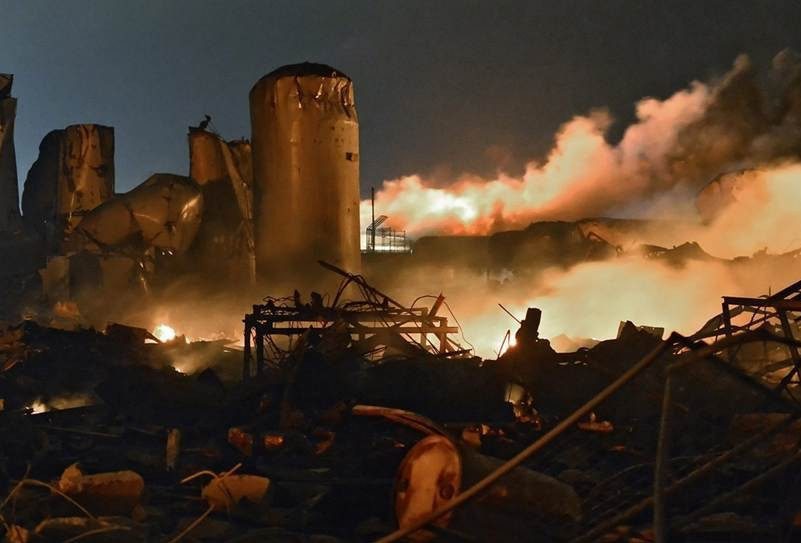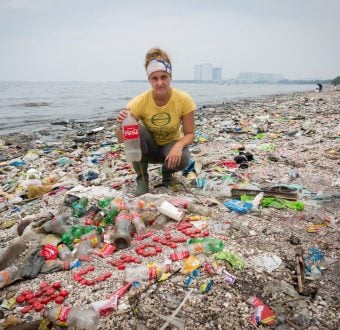The 2016 presidential campaign — including debates — have sunk so low they’ve obscured many issues critically important to most Americans.
For instance, you would never know that more than 100 million Americans live within what the Environmental Protection Agency (EPA) calls “vulnerability zones” — areas surrounding high risk chemical plants. Hundreds of these plants needlessly store enough chlorine and other poison gases that put people up to 14 miles downwind at risk. As a result, a Bhopal-magnitude disaster could be triggered by any accident, natural disaster, or act of terror.
After 9/11, then-Senator Obama has referred to these chemical facilities as “stationary weapons of mass destruction spread all across the country.”
Obama’s Promises to Prevent Chemical Disasters
In 2008, President Obama raised this issue in his presidential campaign, pledging to make chemical plants safer “by setting a clear set of federal regulations that all plants must follow, including … wherever possible, using safer technology, such as less toxic chemicals.”
In 2009, he established “principles” advocating all dangerous chemical plants consider safer alternatives and that the highest risk plants switch to safer available alternatives. That same year, the Clorox Company announced it would convert all of its U.S. facilities to safe alternatives, eliminating the risk of a chlorine disaster for 13 million Americans.
But actual regulations from the Obama administration weren’t on the horizon until the deadly 2013 chemical fertilizer disaster in West, Texas. Three months later, he issued an executive order directing the EPA and other agencies to modernize chemical plant safety rules. It wasn’t until last week that EPA sent a new draft to the White House for approval, which it plans to finalize by December.
The specifics of the new rules aren’t available, but the EPA issued a draft proposed rule in March that fell far short of the president’s promises and received thousands of critical public comments. In it the EPA proposed to require only 12 percent of the chemical plants to evaluate safer alternatives and would have required zero to convert. For less than one-tenth of the cost of the “Bridge to Nowhere,” the EPA could require 10,628 of the highest risk plants to evaluate the feasibility of safer alternatives.
The EPA’s analysis did show that there were 1,517 serious accidents between 2004 and 2013 and that “minority and low-income populations are more likely to be in proximity to those facilities (and thus at greater risk) than other populations … 29 percent more likely to be low-income; 31 percent more likely to be minorities.”
This confirms reports submitted by environmental justice organizations.
How Will Our Next President Address Chemical Security?
While these and other important issues have been ignored in the presidential debates, there’s no denying the warnings of Secretary of Defense Panetta regarding possible cyber attacks on chemical plants and other critical infrastructure, or the fact that terrorists have already used chlorine gas in attacks in Iraq.
But in October 2015, Donald Trump told Fox News that “what they [the EPA] do is a disgrace. Every week they come out with new regulations.” This September, Trump ramped up his rhetoric, pledging to repeal “every single Obama executive order.”
Though Hillary Clinton has not yet spoken on this issue in her presidential campaign, as a U.S. Senator she championed legislation very similar to Obama’s principles.
She and other Senators fought Republican opposition to prevention policies arguing, “in the weeks following the September 11 attacks, Washington, DC’s sewage treatment plant was able to stop using chlorine and switch to safer chemicals instead … We believe it is important that the federal government ensure that facilities consider, and use, inherently safer technologies when practicable. The use of safer, alternative approaches is the key to preventing and mitigating adverse effects from terrorist attacks.”
Safety From Toxic Chemicals Benefits All Americans
Polling shows that Americans across party lines want action on chemical safety and security. In fact, EPA administrator and former New Jersey Governor Christine Todd Whitman proposed similar policies in 2002, until President Bush scuttled them.
But Whitman hasn’t given up. In an October 14 op ed she warned the White House, “It would be most regrettable if in its closing months, the Obama administration did not use this opportunity to expand the use of safer technologies, when feasible, to reduce the vulnerability of chemical plants from accident or deliberate attack.”
On September 29, Senator Barbara Boxer (D-CA) had similar advice for EPA administrator Gina McCarthy, saying, “EPA needs to strengthen its rule before taking final action … All workers and fenceline communities deserve the best available chemical disaster prevention.”
More than 100 organizations — including environmental justice groups, unions, environmentalists and thousands of others — have called on the EPA to strengthen this rule. In addition, the U.S. Chemical Safety and Hazard Investigation Board urged the EPA to adopt stronger prevention requirements in the new rule.
While the next president will have an obligation to enforce any new rules, it is still in President Obama’s hands to make prevention a priority.
We know he’ll hear from chemical industry lobbyists, let’s make sure he hears from you as well.



